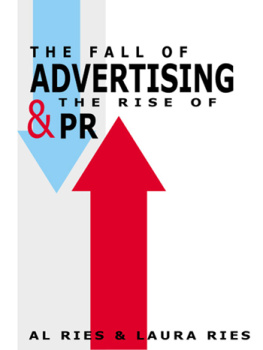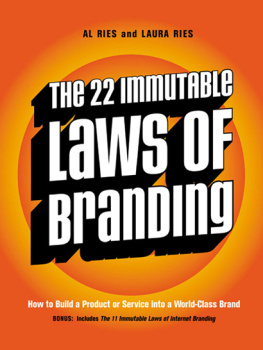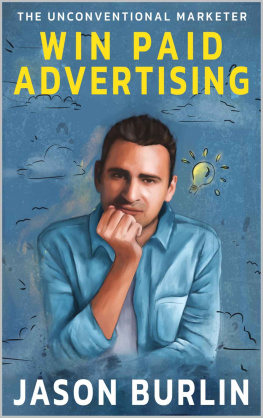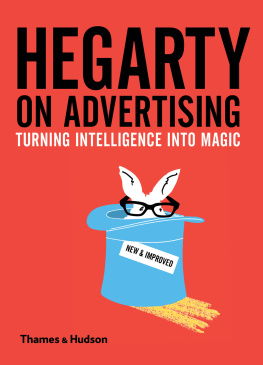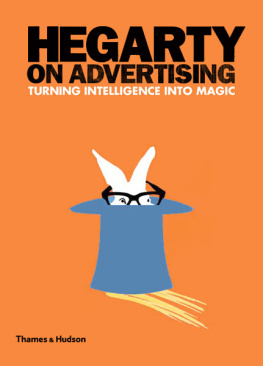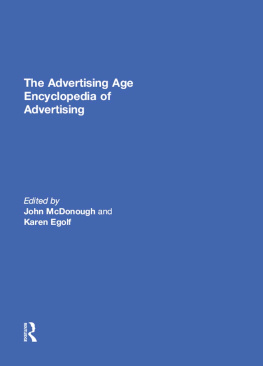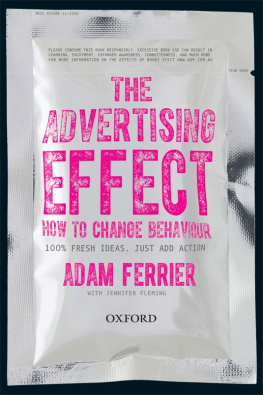

Dedicated to
CONRAD RIES BROWN,
our son and grandson, who arrived the day
after we completed the manuscript

Contents
Thirty years ago, Al cowrote a series of articles for Advertising Age entitled The Positioning Era Cometh. They were an instant hit. Almost overnight, positioning became a buzzword among advertising and marketing people.
If we were writing the same articles for the same publication today, our title would have to be The Public Relations Era Cometh. Wherever we look, we see a dramatic shift from advertising-oriented marketing to public-relations-oriented marketing.
You cant launch a new brand with advertising because advertising has no credibility. Its the self-serving voice of a company anxious to make a sale.
You can launch new brands only with publicity or public relations (PR). PR allows you to tell your story indirectly through third-party outlets, primarily the media.
PR has credibility. Advertising does not. PR provides the positive perceptions that an advertising campaign, if properly directed, can exploit.
When we counsel clients, we normally recommend that any new marketing program start with publicity and shift to advertising only after the PR objectives have been achieved. For managers indoctrinated in an advertising culture, this is a revolutionary idea. For others its a natural evolution in marketing thinking.
A Continuation of PR
Advertising should follow PR in both timing and theme. Advertising is a continuation of public relations by other means and should be started only after a PR program has run its course. Furthermore, the theme of an advertising program should repeat the perceptions created in the mind of the prospect by the PR program.
Nor is the advertising phase of a program something to be taken lightly. An advertising program should be launched only on behalf of a strong brand and only by a company that can afford the commitment an advertising campaign demands.
Advertising people sometimes put down the PR function as a secondary discipline, useful only in a crisis or perhaps to publicize the latest advertising campaign. Nothing could be further from the truth.
For most companies today, PR is far too important to take a backseat to advertising. In many ways the roles are reversed. PR is in the drivers seat and should lead and direct a marketing program. Hence the title of our book: The Fall of Advertising and the Rise of PR.
Advertising Is Dead. Long Live PR
But how can advertising be dead if there is so much of it? You see advertisements everywhere you look.
Its like painting. Painting is also dead even though painting is more popular today than it ever was.
When it comes to painting, its death is not the death of painting itself, but the death of its function as a representation of reality.
The years that followed Louis-Jacques-Mand Daguerres invention of the daguerreotype might have been called the fall of painting and the rise of photography. In the same sense, advertising has lost its function as a brand-building tool and lives on as art.
This doesnt mean that advertising has no value. The value of art is in the eye of the beholder. It only means that when a functional discipline becomes art, it loses function and therefore its ability to be objectively measured.
The Value of a Candle
How do you measure the value of a candle? You cant measure its value by light output, since the candle has lost its function as a means of lighting a room. The years that followed Thomas Alva Edisons invention of the incandescent lamp might have been called the fall of the candle and the rise of the lightbulb.
Yet every night all over America millions of candles are burning. No romantic dinner is complete without candles on the table. Individual candles are sold for $20 or $30 each, much more than a lightbulb. Unlike an electric bulb, the value of a candle has no relationship to its light output. Like the fireplace and the sailing ship, the candle has lost its function and turned into art.
Every form of artwork has its passionate defenders. They will strenuously argue over the value of an individual piece of artwork because there isnt an objective way to measure its value.
The Value of an Advertisement
Advertising fits the same pattern. The ad advocates will emotionally defend their work on the basis of enhancing the equity of the brand or building brand value or creating an emotional bond with consumers or inspiring and motivating the sales force.
To a certain extent, all of this is true, but it cant be objectively measured because advertising is art. It has lost its communications function.
Advertisings value is in the eye of the CEO or the COO or the marketing manager. How much value would you assign the million-dollar painting that hangs in the boardroom? The same logic you apply to the painting can also be applied to your companys advertising.
Our opinion: Advertising is not worth what it costs... with one exception. And its a big exception. When advertising serves a functional purpose, then advertising has a real value. But what is that functional purpose?
The purpose of advertising is not to build a brand, but to defend a brand once the brand has been built by other means, primarily public relations or third-party endorsements.
Dont underestimate the importance of this defensive function. Most companies spend way too much money trying to build brands with advertising (when they should be using that money for PR) and way too little money defending their brands with advertising after they have been built.
Creating a brand and defending a brand are the two major functions of a marketing program. PR creates the brand. Advertising defends the brand. Ironically, advertising people have spent so much time and energy on the brand-building process that they are often not emotionally capable of fighting a defensive marketing war.
The Value of Creativity
What about creativity, the buzzword of the advertising community for as long as we can remember? Creativity, according to a common definition, is the search for the new and different. The emphasis is on being original.
But the new and different is not how you defend a brand. To defend a brand you need to reaffirm the brands core values. You need to run advertising that resonates with consumers. You need consumers to think, Yes, thats what the brand stands for.
Creativity is the last thing a brand needs once a brand has been established in the mind.
Its PR that needs to be creative. Its PR that needs to be new and different. Its PR that needs to be original. The best way to establish a brand is to create a new category, and creating a new category requires creative thinking of the highest order. This is a revolutionary concept in the sense that it goes against conventional thinking.
The Conventional Approach
Most products and services are marketed following a four-step strategy:
- The company develops a new product or service.
- The company researches the new product or service to make sure it offers consumers a significant benefit.
- The company hires an advertising agency to launch the new product or service with a big bang advertising campaign.
Next page
